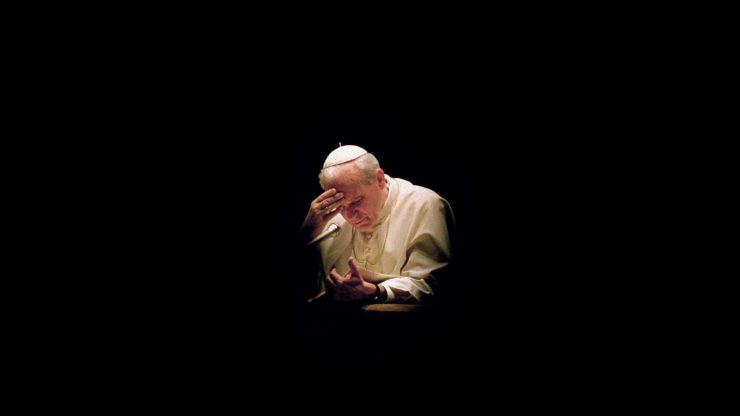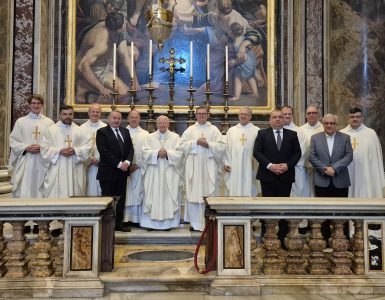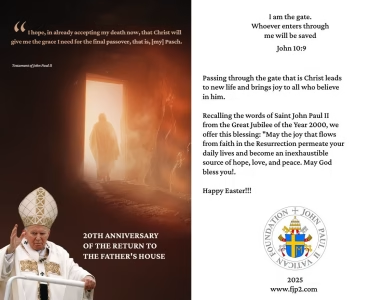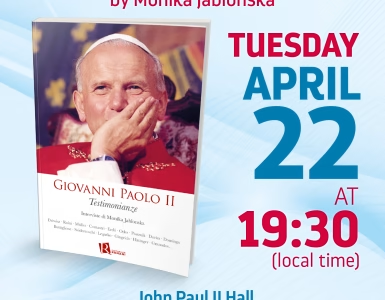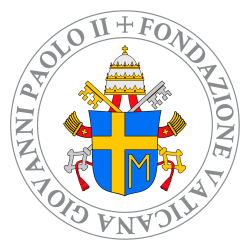Let return to the Vatican to tell you what the Pope’s weekday looked like. Let’s remember that John Paul II was a perfectionist. He wanted to not waste any minute of his time. That’s why he scrupulously planned all his activities: prayer, work, meetings, meals, which were an opportunity to talk with invited guests, and rest. I think it is necessary to remind how Karol Wojtyła lived in the Vatican. The private apartment consisted the bedroom and office room where there was a small table and armchair. Everything was very simple, almost spartan, which suited a person like him who did not pay any attention to the comforts. Here, like in Krakow, he lived extremely plainly. He practiced poverty in an extreme way. He did this without any ostentation, which made a great impression on us. He had nothing and never asked for anything. He did not deal with money matters and did not receive any “salary” from the Holy See. The task of the Secretariat of State was to regulate the expenses that absorbed his activities. You could say that as Pope he was “rich”, but he did not have a penny for himself. The Holy Father began the day early in the morning. He stood up at 5.30, and when he was ready, he went to the chapel for morning adoration, breviary and meditation. At 7.00 Holy Mass, on which the faithful people, priests and bishops were always present. Invited guests (at most fifty people) often saw the Pope kneeling, his eyes closed, in a state of complete immersion in God, almost ecstasy. He did not even notice when someone entered the chapel. Some people said that “he seemed to be talking with the Invisible God.” Bishops and priests were concelebrated the Holy Mass with him. For the faithful people it was a great spiritual experience to which the Holy Father attached great importance (…). The heart of the Pope was close to the suffering of women and men around the world. His kneeler was filled with prayers for sick people. There were letters of sick people on AIDS and cancer. A letter from one mother, who begged for a prayer for her seventeen-year-old son in coma. Letters from families in a difficult situation. Many letters of childless couples who, when their request was heard, wrote to the Pope with thanks. After breakfast, John Paul II were going to his office. He made notes, wrote homilies, and speeches. After breaking his shoulder, he began to dictate texts to one of the Polish priests, first to Father Stanisław Ryłko, then to Father Paweł Ptasznik, who used a laptap, and then translated the texts into Italian. The Pope, when he finished dictating, often asked the helping priest: “What do you think about it?”. Also, he dedicated his time to constant prayer, especially with soaring acts. We can say that he did not stop praying all day. Often, one of the secretaries searching for the Holy Father found him in the chapel: lying down on the floor in a cross position, completely absorbed in his prayers or singing in a low voice during everyday adoration.
Card. Stanisław Dziwisz – “Testimony”

